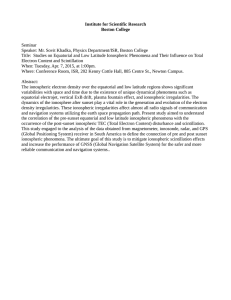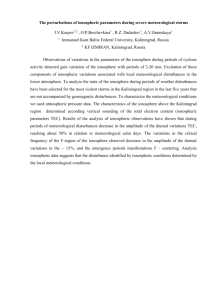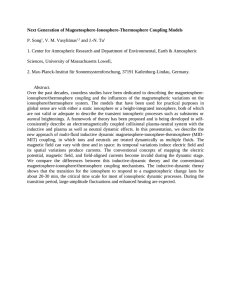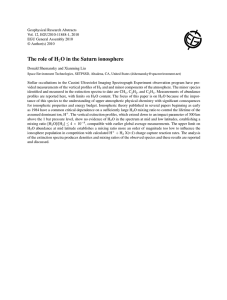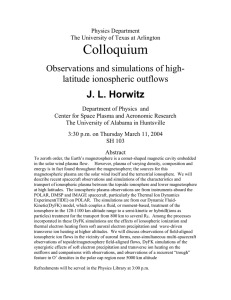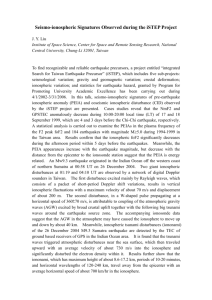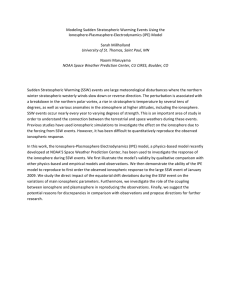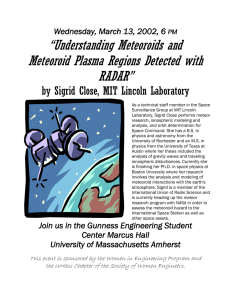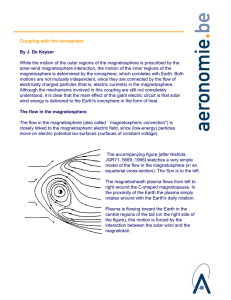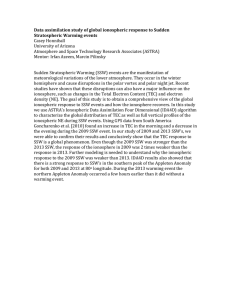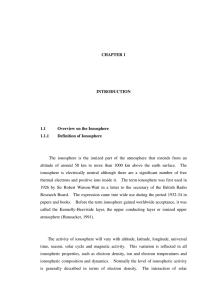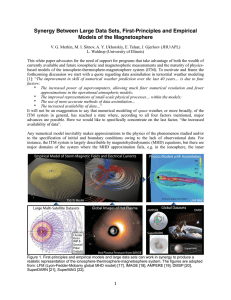A Couple’s Journey through Fifty Years of Ionospheric Space Weather Research
advertisement
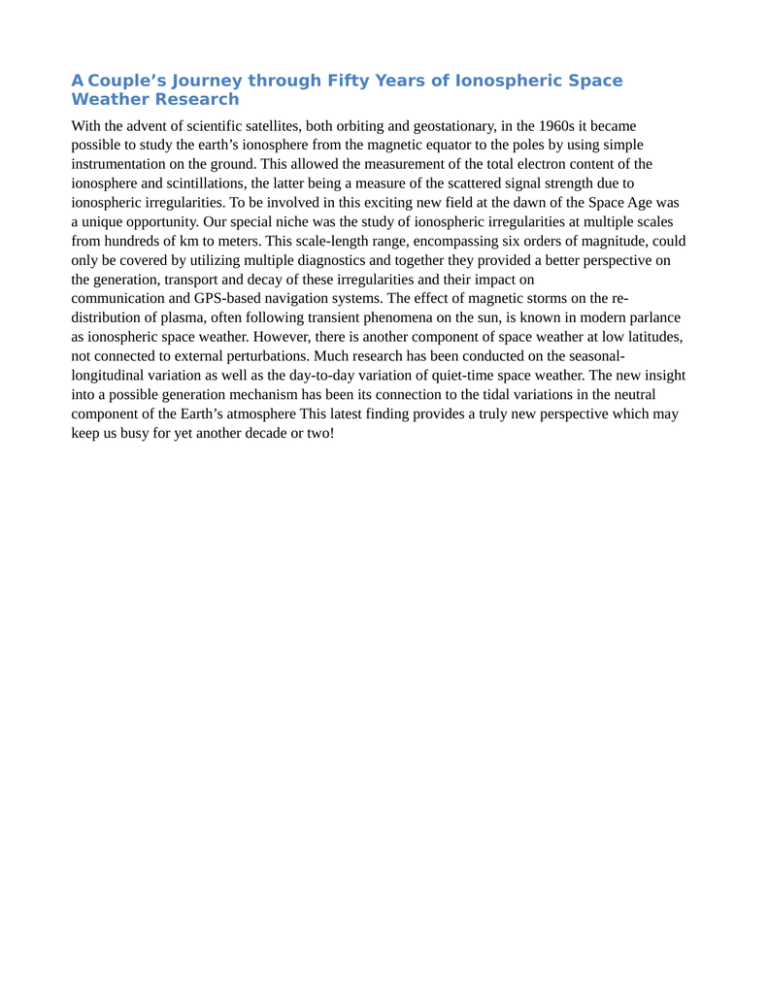
A Couple’s Journey through Fifty Years of Ionospheric Space Weather Research With the advent of scientific satellites, both orbiting and geostationary, in the 1960s it became possible to study the earth’s ionosphere from the magnetic equator to the poles by using simple instrumentation on the ground. This allowed the measurement of the total electron content of the ionosphere and scintillations, the latter being a measure of the scattered signal strength due to ionospheric irregularities. To be involved in this exciting new field at the dawn of the Space Age was a unique opportunity. Our special niche was the study of ionospheric irregularities at multiple scales from hundreds of km to meters. This scale-length range, encompassing six orders of magnitude, could only be covered by utilizing multiple diagnostics and together they provided a better perspective on the generation, transport and decay of these irregularities and their impact on communication and GPS-based navigation systems. The effect of magnetic storms on the redistribution of plasma, often following transient phenomena on the sun, is known in modern parlance as ionospheric space weather. However, there is another component of space weather at low latitudes, not connected to external perturbations. Much research has been conducted on the seasonallongitudinal variation as well as the day-to-day variation of quiet-time space weather. The new insight into a possible generation mechanism has been its connection to the tidal variations in the neutral component of the Earth’s atmosphere This latest finding provides a truly new perspective which may keep us busy for yet another decade or two!
